David Hockney is an English painter, print-maker and photographer. He is considered one of the most influential artists in the 20th and 21st century as he was a huge part of the Pop Art movement in the 1960’s. Hockney was best know for his paintings of swimming pools and portraits of family and friends where most of which was made when he lived in California. His style ranges from painting, drawing and printmaking to video, photography and stage design. In 2004 Hockney returned to England, where he began living in Yorkshire. Quickly becoming fascinated by the Northern Countryside and seasonal change he created a series of landscape paintings which consisted of using different mediums such as charcoal, oil paint, water colour and digital sketches.
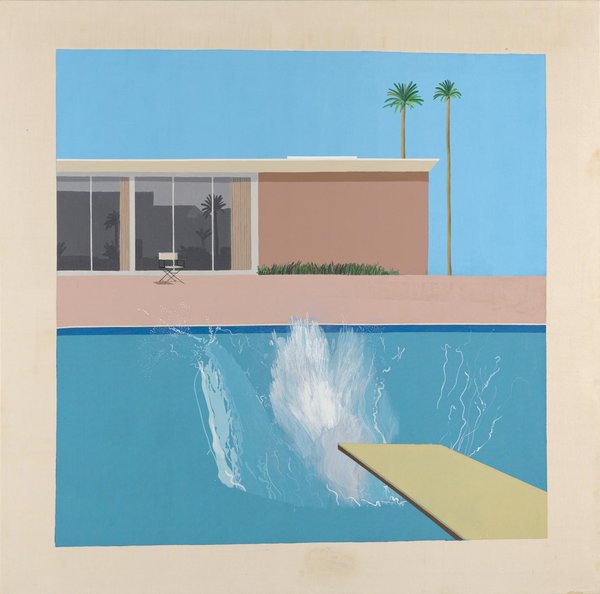
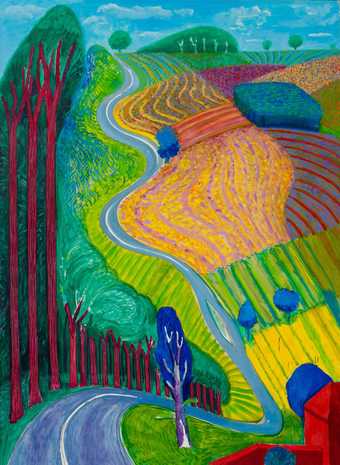
Hockney was greatly inspired by Vincent Van Gough – who was an Impressionist Painter, where he used similar techniques and styles. They were both greatly influenced by Nature, describing it to be like finding endless joy and inspiration.
Impressionism
Developed in France during 19th century, an ‘on the spot’ style was created. Subjects included everyday life and landscapes. It wasn’t a depiction of real life, instead it was an ‘impression’ of what the person, light, atmosphere, object or landscape looked like to them.
‘Endless subjects are found in nature,’
~David Hockney
In photogrpahy you arent really looking comapred to painting
Painting allowed Hockney to express strokes of colour which were highlights and shapes that go unnoticed. This idea when you paint one stroke your looking and noticing the other stokes of colours, meaning that you are always seeing more which creates this ‘exiting feel’ stated by Hockney.
Photography – Joiners
During the early 80’s Hockney began experimenting a new technique called photo joiners, which created a new way of visualising photographs. With his interest in optics, which was a scientific study of light, – transmission and deflection, he expressed this further in this technique, experimenting with familiar subjects family, friends, landscapes and interiors. The images create different yet engaging compositions which never fail to draw you in. This method is like a mosaic pattern, piecing together the photograph to form a cohesive, whole image. This reveals various perspectives of the photograph. The fragmented pieces alters you perspective of the subject, ‘Hockney’s joiners disrupt conventional viewpoints, inviting a different exploration into the intricacies of perception and representation.’ This idea that each photograph represented something different, firstly from its unique name to the expressive, broken up layout, which perhaps represents the narrative of photograph. Having explored different types of layouts, it closley reminded me of piecing a puzzle together, where you have the missing pieces which could be the most important or the least important.
Hockney’s Visual style greatly interests me as it opens up your interpretation of his work meaning that it can be percived differently for different people. For some layouts I noticed some pieces were missing, or arranged in a particular which was how Hockney wanted you to see the image, which perhaps reflected the story in the image. This unusual yet very attractive style is what I want to experiment with further – This idea of missing parts that are fragmented/ slightly edited and adjusted that don’t fit perfectly together, opens up your interpretation of what the message or narrative is truly telling you:
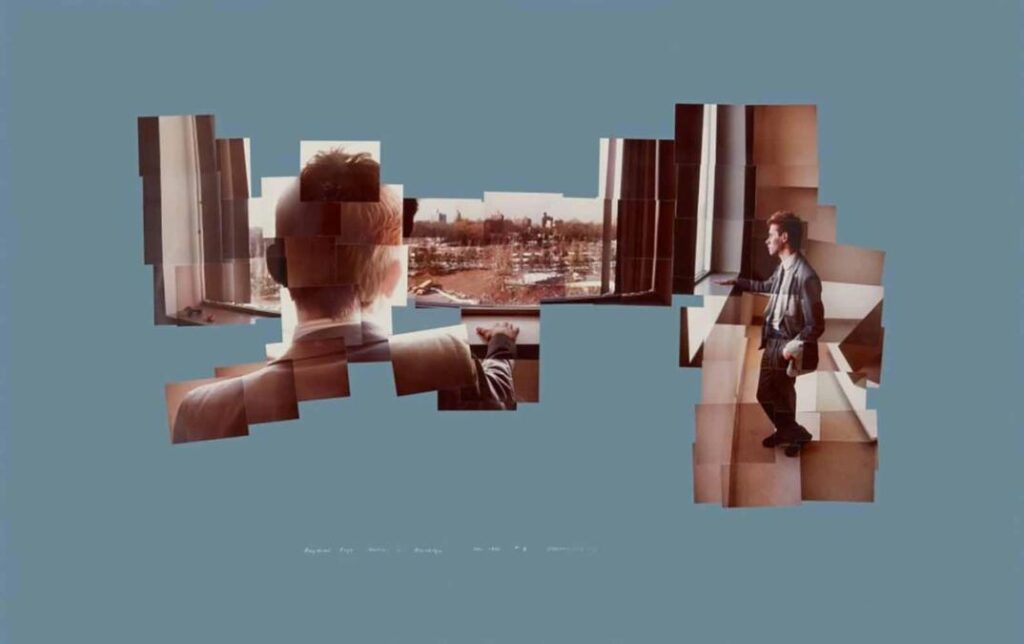
Raymond Foye Looking At Brooklyn David Hockney
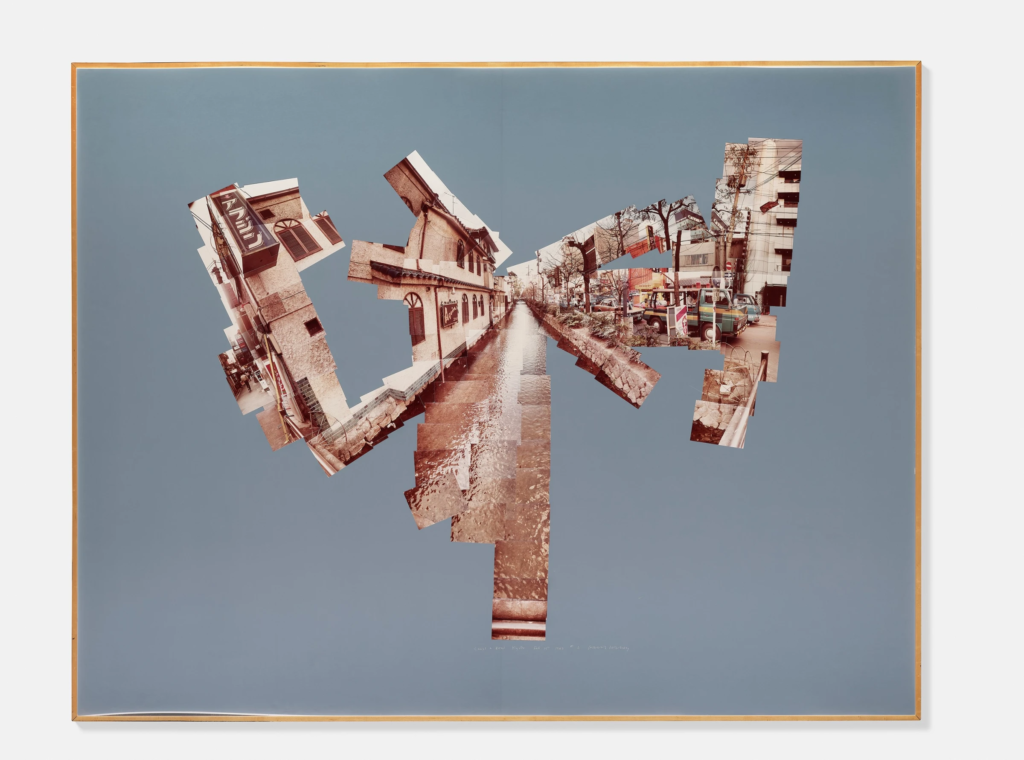
Canal And Road, Kyoto David Hockney
At the early stages of Hockney’s joiners during 1980, he was dissatisfied by the current photographs presented to him, expressing them to be limited and confined to a single perspective. From this, Hockney was inspired to experiment with new ways of capturing the importance of ‘time’ and space’ in a way that closely reflected human vision and experience.
Hockney’s joiners transitioned through various styles from moments of people within environments to landscapes. However the landscapes reveal much more as they express a type of reality that is unknown or perhaps aren’t used to.
Inspirations for the Joiners:
Hockney’s Initial inspirations came from the way we perceive the world around us – not a frozen, single moment but as a complex, amalgamation of views, perspectives and moments. Hockney thought a typical photograph only expressed a limited, static view of a subject, which is what lead to Hockney’s joiners style as this represented multiple perceptions of the way we see things. This expresses the theme of union differently to what we would normally perceive it to be. A new way in which the photograph is distorted and fragmented, broken up into pieces that are never the same as before which show how they unite back together as neither is the same.
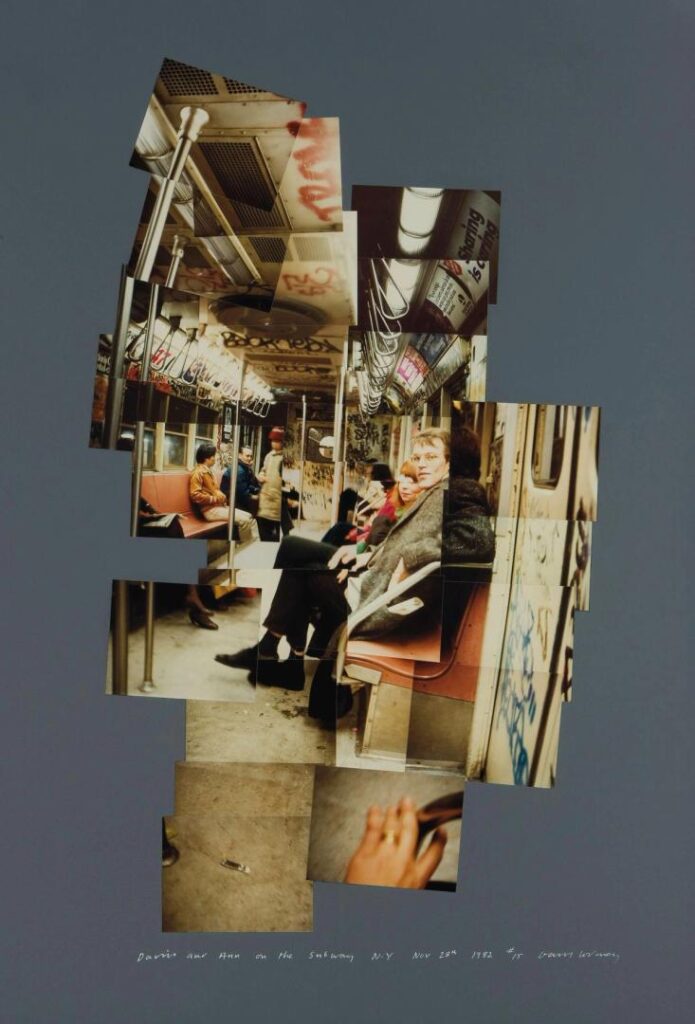
David and Anne on the Subway, N.Y. Nov 28
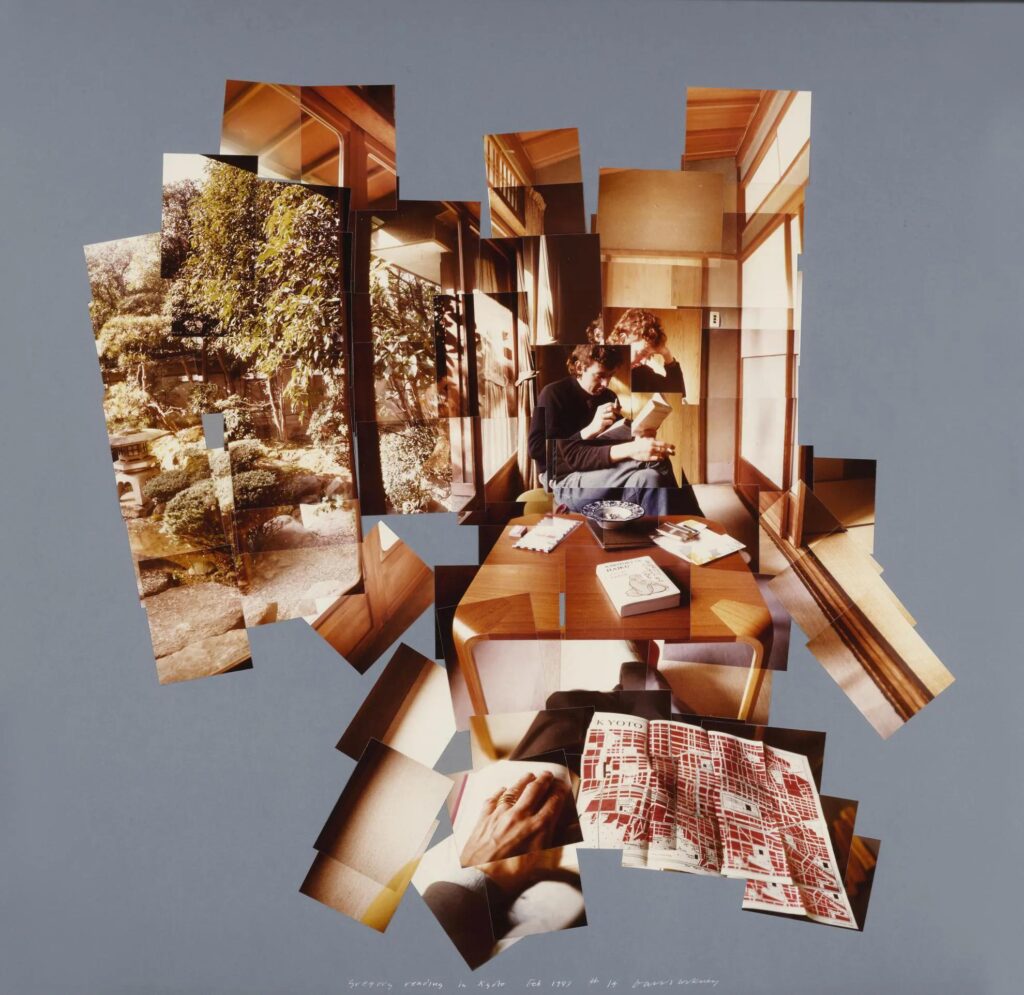
Gregory Reading In Kyoto
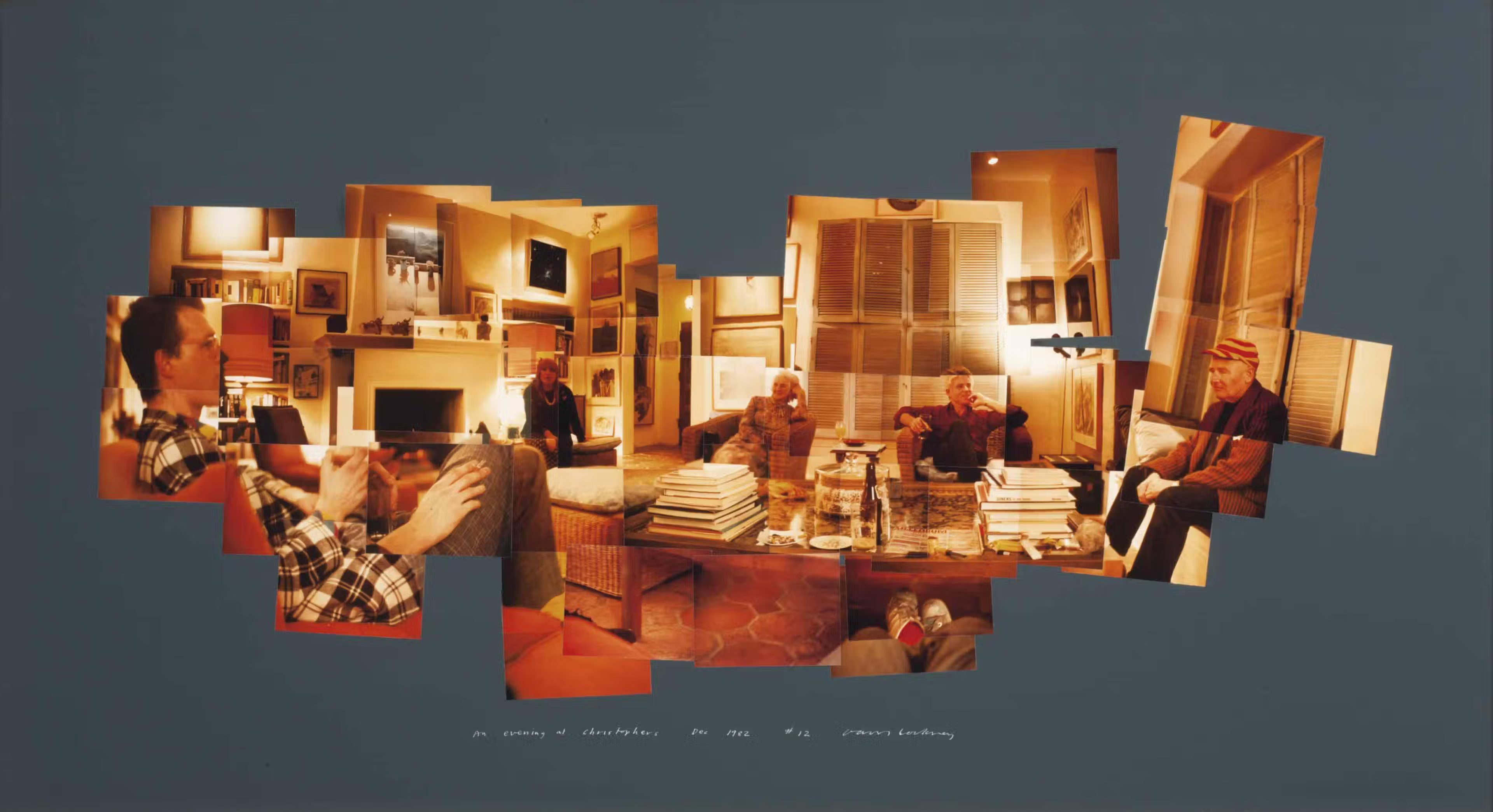
This process involved Hockney taking numerous photographs from different angles and perspectives, each focusing on various details of the scene. Then piecing them together like a jigsaw puzzle but without intending to blend them back into a traditional/ original photograph. This creates an interesting, in-depth feature as the photo is broken up creating a fragmented, distorted look, but is pieced back together – expressing imperfection. Hockney embraces this imperfection, through the overlapping and disjointed edges of images which shifts your perspective and scale. This method highlights, giving contrast between time and viewpoint all within the same space, which changes your perspective, making you see the subject in a new way.
Composition. Colour. Perspective.
Composition, colour and perspective are three very important elements of Hockney’s photographic joiners. Each one expressed a different type of movement, whether that is visually or how we perceive a feature. These features are what guides the viewers eye through the image expressing narrative and movement. I like how it isn’t obvious what the subject is, instead your eyes are gradually lead to it through the fragmented, imperfect pieces.
The pieces create a non- linear sequence meaning that the placement of each image isn’t ordered in straight lines, instead it is disjointed and broken lines- which reflects they way our eyes move across the scene, rather than from a single glance.
Colour harmonises the overall composition or draws attention to specific areas- which is used to create mood, depth, and emphasis.
Perspective is the most dramatic change expressed throughout the photo, as your eyes are constantly changing with the direction, the images are distorted. Photographs are taken from multiple viewpoints, then re-constructed expressing multifaced and angled images which is different traditional and Hockney’s original single-viewpoint images. Therefore this offers a more holistic and immersive experience of space and time.
Non- linear Narratives
‘I was always aware that cameras do push you away, I was trying to pull you in.’
~ David Hockney
Hockney’s style became quickly influenced by Cubism. This idea that multiple perspectives are brought together, overall producing this a-symmetrical imperfect photograph. Whilst this also produces a narrative through a non-linear sequence. The movement that is produced through expressed the scene.
https://www.myartbroker.com/artist-david-hockney/articles/exploring-david-hockneys-joiners

Visual
The photogrpah is shot in a subway car, so it is underground meaning the only light source is coming from light in the tube and lights on phones. This creates a warm effect as the light is reflecting off the warmer tones of what people are wearing, signage/graffiti, seats and walls. This then leaves the dark tones to form shadows and contrast, as it blends into the background which leads us down the train – into the distance – the middle of the photo.
The contrasting features creates texture, as the uneven forms of patterns lines and shapes are expressed.
Contextual
David and Anne on the subway depicts the inside of one of New York’s iconic subway cars. Hockney mimics the spherical perspective of the human eye, layering the photographs over one another, which creates an in-depth view of the passengers and details of the train Hockney is traveling in. His reference photographs used for his early painting work, frustrated him, as they didn’t present life in the way a drawing or painting did. So Hockney moved from the ‘static,’ ‘lifeless’ and ‘frozen moments,’ brought from single viewpoints, to piecing them together which produce multiple perspectives. This is effective because the disjointed, un-smooth, overlapping pieces mimic’s the train rattling through the tunnels, and the abrupt swaying of those within it. I find this feature really effective – as it enhances the visual aspects of the photograph, creating unique movement and bringing a unique form of depth,- this is expressed through the same way for the actual image. As the photo of the image isn’t obvious straight away as we are initially distracted by the fragmented, disjointed yet reconnected parts that are pieced back together.
The vibrant yet warm tones of colour are enhanced and brought to life through the overlapping as new compositions, shapes, patterns, lines and texture is revealed, creating unique leading lines. This itself creates a much more interesting image, as new features are being revealed all the time showing off different effects. Upon this, shadows are emphasised from the subjects as well as the surroundings – the invisible details within the train such as the edges, backgrounds, textures of patterns and signs/ symbols. So through this effect of joiners the disjointed images moves the shadow around, breaking it up, and forming new shadows in places. This connects us in different ways which draws us in creating depth as the leading lines created from this leads you in closer.
https://www.myartbroker.com/artist-david-hockney/collection-photo-collages

Anya, good blog post on Hockney’s ‘joiners’. Let see images you have made in response for constructing your own ‘joiners’.